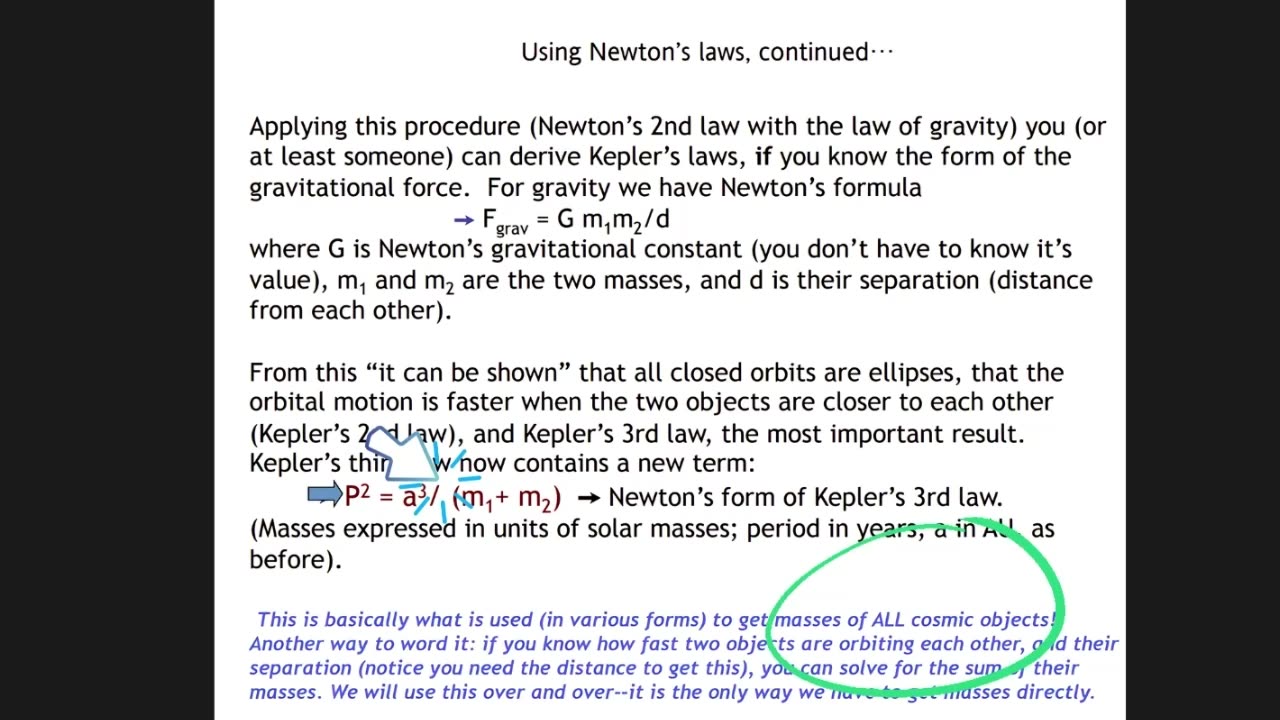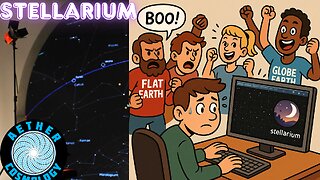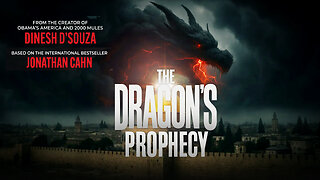Premium Only Content

About the 'Gravitational Constant'....
About the 'Gravitational Constant'....
The force you named gravity, is not in question, the causal mechanism IS!
We agree that things go down when dropped.
Little 'g' is LATITUDE DEPENDANT and can be derived by...
The kinematic equation:
ℎ=1/2at^2+vt
Where:
- ℎ is the height of the ball above the ground
- a is the constant acceleration downward
- t is the time for the ball to fall to the ground
- v is the initial velocity, which is 0 in this case (since the ball is dropped from rest)
Simplified kinematic equation when the initial velocity v=0:
ℎ=1/2at^2
solved for acceleration a:
a=2h/t^2
To put this into a real life situation, we only need to know the height at which an object is dropped and the time it took to hit the ground to calculate the rate at which it falls.
if an object is dropped from 10 meters,
and it takes 1.43 seconds to fall,
we can solve for a,
a= 2x10/(1.43)^2
a= 20/2.0449
a= 9.78
The gravitational constant G is a key part of Newton's law of universal gravitation, which states that the force FF between two masses m1 and m2 separated by a distance r is given by:
F=G*(m1m2/r^2)
This constant G is what makes the equation work, giving us the correct magnitude of the gravitational force.
Historical Context: Cavendish Experiment
The first precise measurement of G was conducted by Henry Cavendish in 1798 using a torsion balance apparatus. Cavendish's experiment didn't directly measure G but rather the density of the Earth. From this, G was later derived. The setup involved measuring the tiny gravitational attraction between lead spheres, which allowed Cavendish to calculate the force and thus infer the value of G indirectly
Deriving G Without Earth's Mass
To derive G without knowing the Earth's mass, we can turn to the principles of the Cavendish experiment, which relies on measuring the gravitational force between known masses in a controlled environment.
Setup the Experiment: Use a torsion balance with two small masses m1 and m2 suspended from a wire. Place two larger masses M1 and M2 nearby, such that they exert a gravitational force on the smaller masses.
Measure the Force: The gravitational attraction between the masses will cause the wire to twist. Measure the angle of twist θ, which is proportional to the force F.
Calculate the Torsion Constant:
The torsion constant κκ of the wire can be determined by measuring the period of oscillation of the system.
The torque τ due to the gravitational force is given by τ=κθ
Relate Force to Torque:
The force between the masses is related to the torque by
τ=F⋅d
where d is the distance between the masses.
Derive G:
Using the measured values, we can derive G from the relationship
G=m1m2τ/r2
Here, r is the distance between the centers of the masses m1 and m2, and τ is the torque measured.
Mathematical Formulation
Given the torsion balance setup, the gravitational force can be expressed as:
The torque τ is related to the force by:
τ=F⋅d Since τ=
-
 47:38
47:38
Anti-Disinfo League
1 month agoThe Wizardy of Stellarium
4361 -
 2:59:23
2:59:23
Side Scrollers Podcast
19 hours agoAssassin’s Creed CIVIL War CANCELLED + Hasan Caught in LIE About Dog Collar + More | Side Scrollers
79.5K19 -
 1:33:41
1:33:41
Dinesh D'Souza
1 day agoThe Dragon's Prophecy Film
53.4K30 -
 15:10
15:10
Dr Disrespect
2 days agoI FINALLY Beat Baby Steps
127K16 -
 19:54
19:54
Forrest Galante
4 days agoPrivate Tour Of America's Best Marine Animal Facility
105K15 -
 LIVE
LIVE
Lofi Girl
2 years agoSynthwave Radio 🌌 - beats to chill/game to
300 watching -
 2:19:50
2:19:50
Akademiks
6 hours agoDrake Lawsuit Dismissed by Federal Judge. What does it Mean.... for the boy.
130K9 -
 1:01:38
1:01:38
DeVory Darkins
15 hours ago $51.15 earnedSchumer suffers humiliation as critics applaud Trump's historic peace deal with Tim Pool
115K60 -
 56:09
56:09
Steven Crowder
20 hours agoBlack Fatigue is Real and I Told Them Why | Black & White on the Gray Issues
525K2.25K -
 2:05:36
2:05:36
Inverted World Live
13 hours agoSaint's Tomb Opened for First Time in 800 Years for Ancient Ritual | Ep. 121
107K18